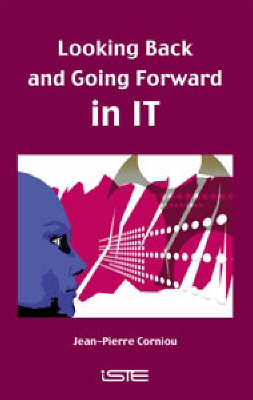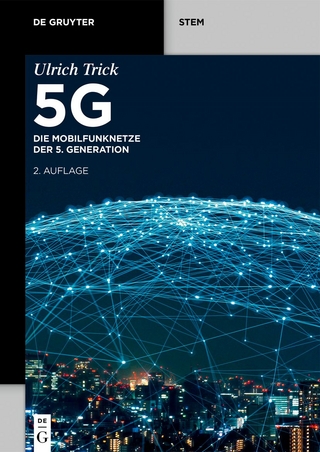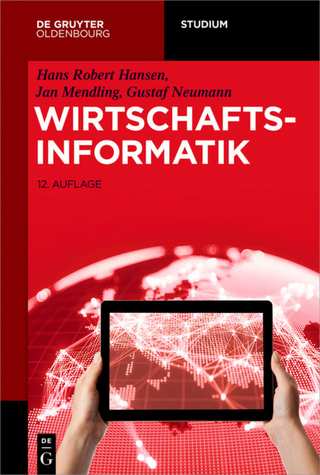
Looking Back and Going Forward in IT
ISTE Ltd and John Wiley & Sons Inc (Verlag)
978-1-905209-58-3 (ISBN)
Despite its ubiquity in the modern world, the author highlights that efficient use of IT by businesses can only be gained by a good understanding of its potentials and pitfalls, highlighting how its informed use in practice is essential for companies to succeed. Finally, questions are raised concerning the future of IT: who will reap the benefits and why? Will IT continue to provide solutions and will it always deliver on its promise? Will it cease to advance and thus cease to be studied or will it continue to develop and thus provide new opportunities and challenges to users?
Jean-Pierre Corniou is CIO at Renault.
Foreword by Louis Schweitzer, Chairman and Chief Executive Officer, Renault 9
Introduction – All Set for an E-journey 13
Chapter 1. The First Information Revolution 17
1.1. Information: the catalyst for the development of the human community 17
1.2. Writing 19
1.3. Counting 20
1.4. Sorting: Hollerith’s tabulating machines 23
1.5. Europe lagging behind 24
Chapter 2. From Electromechanics to Electronics 27
2.1. The NCR crucible 27
2.2. A company named CTR 29
2.3. IT: a product of World War II 30
2.4. IT: a complex, precious and expensive commodity 32
2.4.1. The UNIVAC venture 33
2.4.2. The IBM riposte 34
2.4.3. The BUNCH 35
2.5. The trials and tribulations of IT in Europe 36
2.5.1. France: caught between state intervention and US domination 37
2.5.2. Great Britain’s vanishing greatness 40
2.6. Centralization of IT power and work organization 42
Chapter 3. The Dawn of the Digital Era 47
3.1. The quest for new freedom 47
3.2. The colorful saga of major firsts 49
3.2.1. The first micro-computers 50
3.2.2. Sources of inspiration 53
3.2.2.1. PARC 53
3.2.2.2. MIT54
3.2.3. The first groundbreaking software 56
3.2.3.1. The spreadsheet revolution 56
3.2.3.2. An e-mail odyssey 57
3.2.3.3. The birth of Bill Gates and Microsoft 58
3.2.3.4. The world of games 58
3.2.4. A three-dimensional world 59
3.2.5. Scientific instrumentation through servers: the story of HP 60
3.3. The internet explosion 61
3.3.1. From ARPANET to the web 62
3.3.2. 1993: the official birth of the web 65
Chapter 4. Light and Shade in the Digital World 69
4.1. The family tree of the digital world 69
4.1.1. Stalwarts undergoing change 69
4.1.1.1. Honor to whom honor is due 70
4.1.1.2. Telephone companies 71
4.1.2. How golden was my Valley! 72
4.1.3. Integrated software editors 74
4.1.4. Microsoft: an entirely separate case 75
4.1.5. The web generation 77
4.1.6. The inescapable consultants and service providers 78
4.2. The slippery slope 80
4.2.1. The victims of the second wave 80
4.2.2. Ousted leaders 81
4.2.3. Micro-computing à la française 82
4.2.4. Broken promises: could do better! 83
4.3. The engines powering progress in the digital era 84
4.3.1. Human/machine interface 85
4.3.2. The laws in the new world 87
4.3.2.1. Moore’s Law 88
4.3.2.2. Metcalfe’s Law 89
4.3.2.3. Ruettger’s Law 89
4.3.2.4. Gilder’s Law 89
4.3.2.5. Shannon’s Law 89
4.3.3. Machine diversification and interoperability 89
Chapter 5. The Promise and Reality of New Technology 91
5.1. IT effectiveness called into question 91
5.2. The value of IT92
5.2.1. IT and economic savings: can the case be closed? 93
5.2.1.1. The macroeconomic approach 95
5.2.1.2. The microeconomic approach 97
5.3. The IT sector set up as a model 102
5.4. Telecommunications in the eye of the storm 105
5.5. Shifting boundaries and extended companies 108
5.6. Corporate network players 110
5.6.1. The customer is always right! 110
5.6.2. Marketplaces113
5.6.3. Employee-centric 115
5.7. New opportunities and new competition 117
5.8. The new time/space framework 119
Chapter 6. IT Policies in Efficient Enterprises 121
6.1. Reduce the shortfall between promises and reality 121
6.2. Shedding light on IT and information systems 124
6.3. Information governance 126
6.4. Making choices 126
6.4.1. Interoperability 127
6.4.2. Scalability 128
6.4.3. Reversibility and independence vis-à-vis suppliers 128
6.4.4. Predictability of performance 129
6.5. Structuring 130
6.6. Realization 134
6.7. Measurements and monitoring 136
6.7.1. Keys to IT operations 140
6.7.2. Monitoring maintenance programs and new projects 141
6.8. To do it oneself or ask someone else to do it? 141
6.8.1. The rise of purchased tools 142
6.8.2. The transformation of in-house IT 143
6.8.2.1. Purchasing logic 143
6.8.2.2. The informed decision not to purchase 145
6.8.3. The merciless world of contracts 147
6.9. Sisyphus and security 150
Chapter 7. New Instructions for CIOs 153
7.1. Lessons of the past 154
7.1.1. Key IT issues since 1970, as seen through the eyes of CIGREF reports 156
7.1.2. With the benefit of hindsight: the major stakes of the 1990s 158
7.2. The CIO’s missions 161
7.2.1. The CIO-teacher 162
7.2.2. The CIO-leader 164
7.2.3. The CIO-manager 165
Chapter 8. New Vision(s)? 167
8.1. Gurus and a New Economy in a perfect world 167
8.1.1. Shattered dreams? 168
8.1.2. What remains of the dot-com years? 169
8.2. The technological outlook 170
8.2.1. What a beautiful world! 170
8.2.2. Open source software: the alternative? 174
8.2.3. Cyborg and the cyberworld: reality and delirium 176
8.3. Citizenship and economic development 177
8.3.1. Unequal access to internet resources 177
8.3.2. The first hesitant steps towards electronic democracy 181
8.3.2.1. Electronic voting 181
8.3.2.2. Access to public services 182
8.4. Developments in the Third World 184
8.5. Security and freedom: what are the real threats? 184
8.6. Press, media and culture 185
8.7. Health and education 187
Conclusion 191
References and Bibliography 193
Acknowledgements 197
| Erscheint lt. Verlag | 13.2.2006 |
|---|---|
| Verlagsort | London |
| Sprache | englisch |
| Maße | 160 x 241 mm |
| Gewicht | 447 g |
| Themenwelt | Mathematik / Informatik ► Informatik |
| Wirtschaft ► Betriebswirtschaft / Management ► Wirtschaftsinformatik | |
| ISBN-10 | 1-905209-58-4 / 1905209584 |
| ISBN-13 | 978-1-905209-58-3 / 9781905209583 |
| Zustand | Neuware |
| Haben Sie eine Frage zum Produkt? |
aus dem Bereich


